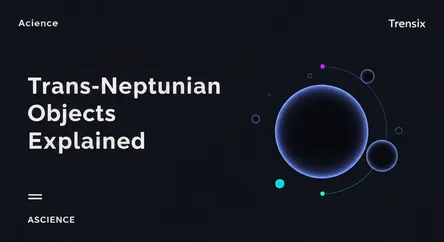Science
Trans-Neptunian Objects Explained

Discover trans-Neptunian objects (TNOs), the icy bodies and dwarf planets orbiting our Sun in the mysterious, vast region beyond Neptune.
What is it?
A trans-Neptunian object (TNO) is any minor planet or celestial body in our Solar System that orbits the Sun at a greater average distance than the planet Neptune. These objects are remnants from the formation of the Solar System and are primarily located in three distinct regions: the Kuiper Belt, the more distant scattered disk, and the hypothetical Oort Cloud. TNOs range in size from small, icy bodies to dwarf planets like Pluto, Eris, and Makemake. They are composed mostly of rock and ice and follow long, often highly elliptical orbits around the Sun.
Why is it trending?
Interest in TNOs is surging due to new discoveries from advanced telescopes like the James Webb Space Telescope and large-scale sky surveys. These instruments are revealing TNOs with unusual characteristics, such as rings or moons. Furthermore, the ongoing search for a theoretical "Planet Nine" keeps TNOs in the spotlight. Scientists hypothesize this massive planet's existence based on the strangely clustered orbits of several distant TNOs, suggesting a large gravitational influence at play in the outer Solar System.
How does it affect people?
While TNOs have no direct impact on daily life, their study is crucial for understanding our cosmic origins. They act as pristine fossils, providing invaluable clues about the early conditions and formation of our Solar System. Studying their orbits helps refine models of planetary migration and evolution. The quest to find and categorize TNOs drives technological innovation in telescopes and data analysis, expanding our map of the Solar System and inspiring public fascination with the vast, unexplored frontiers of space.